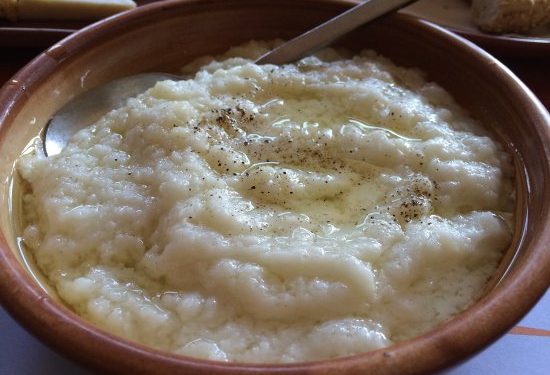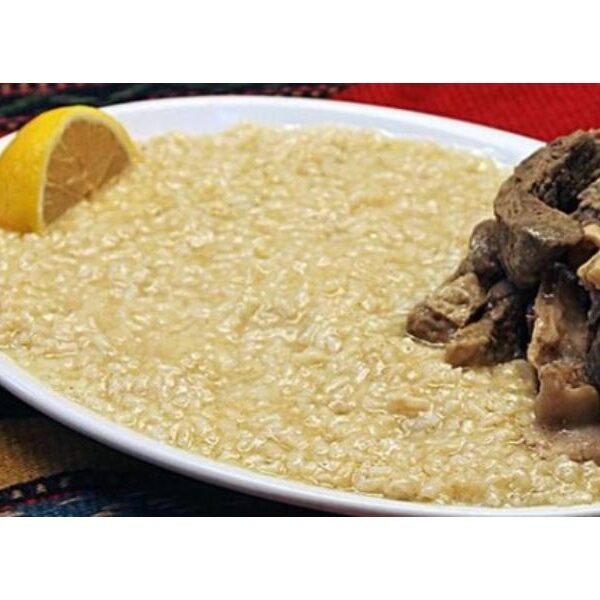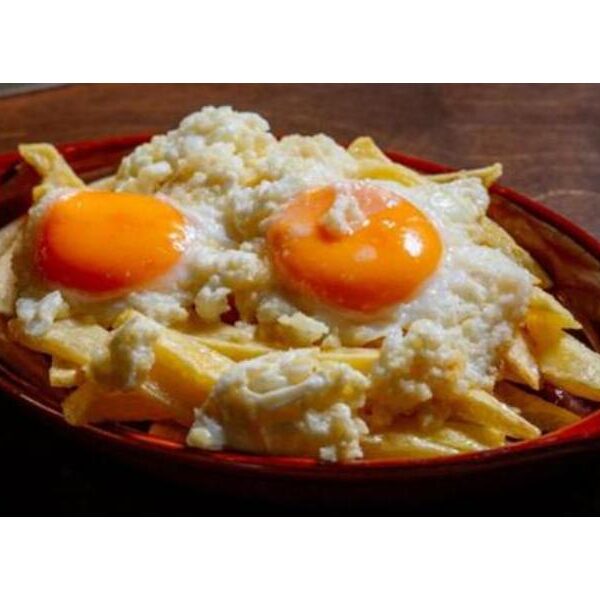Staka is a prized traditional dairy delicacy of Crete, crafted from the creamy, fatty essence of goat or sheep milk. Bearing some resemblance to clarified butter, staka has a unique character: it’s rich, buttery, and slightly tangy, with a smooth and thick consistency that lends itself beautifully to various Cretan dishes.
The Art of Making Staka
Creating staka begins with skimming the creamy layer from the top of raw goat or sheep milk, which is common to the island. The cream is then cooked gently with a touch of wheat flour or starch, stabilising it and preventing separation as it thickens to a luscious, creamy texture. As it cooks, a layer of butterfat, known as stakovoutyro (staka butter), rises to the top. This butterfat is carefully skimmed and saved separately, enhancing many Cretan recipes.
However, the process begins with tsipa, the crust that forms when sheep or goat milk is boiled and left to cool, similar to traditional village-style sheep yoghurt. This tsipa is the foundation of both staka and stakovoutiro. Heated slowly with a sprinkle of salt and flour, the tsipa thickens, yielding butter collected as stakovoutiro. The remaining creamy mixture is the staka, which retains a mild tang and rich depth.
Culinary Uses of Staka and Stakovoutyro
Staka is a versatile ingredient, treasured in both simple and elaborate dishes. Some of its most popular uses include:
- With Eggs: Staka adds a unique, buttery richness when fried with eggs, giving them an irresistible flavour.
- With Pilafi (Rice): It’s often served with pilafi, a traditional rice cooked in meat broth, where the creamy richness of staka elevates the dish.
- As a Spread: Staka is a warm, savoury spread that can be enjoyed with bread, perfect for tasting its flavours on its own.
- In Pastries and Pies: This indulgent cream is sometimes added to savoury Cretan pies, giving them a depth of flavour that highlights the island’s culinary traditions.
Gamopilafo Eggs with staka
Stakovoutyro, on the other hand, is a profoundly flavorful butter with a pleasantly pungent aroma. A small spoonful of this special butter can elevate roast dishes, pasta, and gamopilafo—a traditional Cretan rice dish often served at weddings. The distinctive scent and taste of stakovoutiro make it a unique and irreplaceable part of Cretan cuisine.
Flavour, Texture, and Nutrition
Staka’s flavour is rich and full-bodied, with the characteristic tang of goat or sheep milk. Its texture is creamy and almost custard-like, with the addition of flour providing just enough body to make it a delightful addition to savoury dishes. High in butterfat, staka is best enjoyed in small amounts, where its concentrated flavour shines without overpowering a dish.
Cultural Significance of Staka
Staka is more than a food; it’s a cherished piece of Cretan heritage, often made in small batches in rural areas and treasured as part of the island’s resourceful, flavour-rich traditions. Its preparation embodies the Cretan dedication to using every part of the milk, celebrating simplicity and creativity. Whether enjoyed with eggs, spread on bread, or used to enhance the most festive dishes, staka—and the equally beloved stakovoutiro—represent the warmth, hospitality, and depth of Cretan culinary culture.






